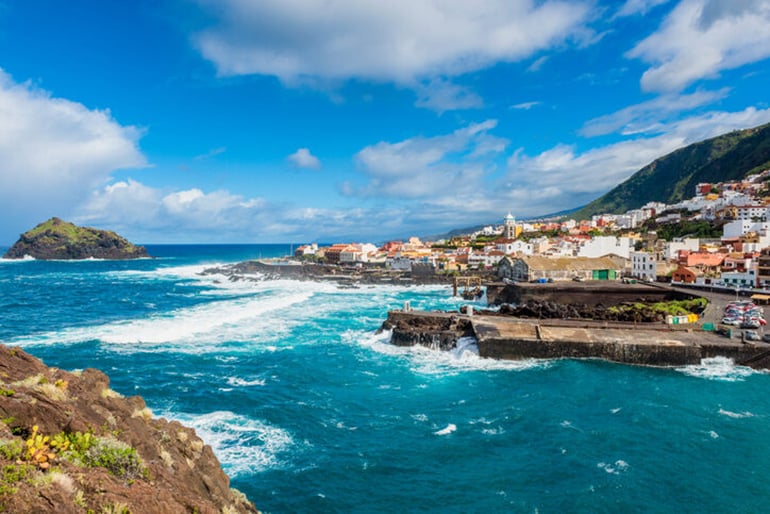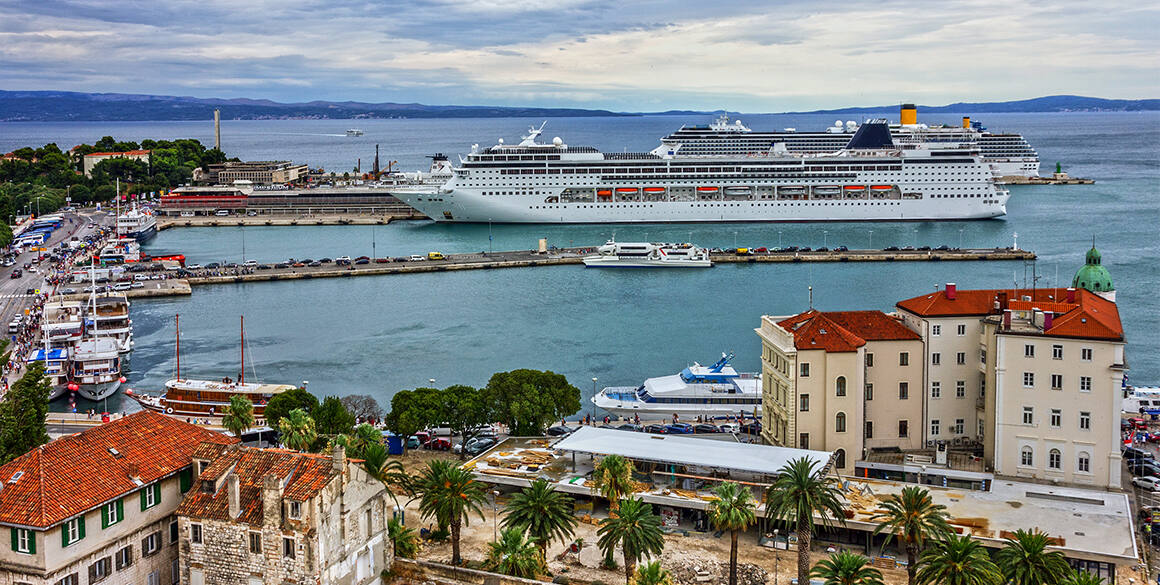It feels like everyone’s got their sights set on Europe travel lately … and we can’t blame them! The dollar is nearly at parity to the Euro as of publication, allowing it to take us farther than in times past, and second cities are trending for travel worldwide. The search for “authenticity” in experiential travel has shown no signs of slowing, and culinary exploration continues to be a running theme. People are expanding their horizons, with increased interest in European beach islands such as Mallorca, Ibiza, Crete, Tenerife, the Azores and more, and city and sea itineraries are gaining in popularity. In short, there are more reasons to go to Europe in 2024 than there are places!
But before you send your clients packing, know that while Travel Advisors Get You There, there’s still some prep to take care of pre-trip outside of the actual planning their advisor’s doing. We at ALG Vacations® Asked a Pro and spoke with our own Senior Manager of Partnership Marketing for Europe, Dianna DelTorto, for some of her best pre-trip travel tips for the region of the world she specializes in. Here are some of the travel hacks she swears by before she jets off overseas.
Check the Time
… And we’re not just talking about time zones here. DelTorto advises, “Pay attention to any big religious holidays and bank holidays, because things might be closed at certain times of day … or completely!” So if your heart is set on going to a specific attraction, you’ll want to look up their days and hours of regular operations, as well as checking their annual closures.
Some attractions might even be seasonal, making it doubly important to consult their calendar before you pencil a trip into yours. For example, the northern lights are not visible during summer in Iceland and major French cities are known to partially shut down in August as residents head for the shores.
Download Your Destination’s Travelogue
ALG Vacations® has done the hard work of research for many of the most popular destinations in Europe and put them all together in our Travelogue series of digital destination brochures. These downloadable, printable, and customizable mini guides provide details that can help anyone get excited and inspired for their European escape, listing out specifics of “Things to Know Before You Go,” such as documentation specifics and electric voltage, city descriptions and attraction highlights, best hotels, and even sample itineraries to guide your visit.
Destinations with their own editions include France & Monaco, Italy, Greece, Spain, and the United Kingdom & Ireland.
Set a Flexible Pace
It’s natural to want to get the most mileage out of your long-haul flight. Everything is so close and accessible in Europe, especially when public transportation like high-speed trains are available to link you country to country! But “Don’t try to force too many stops into one trip,” warns DelTorto. As tempting as it may be to do it all in one vacation, “Transitioning between stops takes at least half a day away” from your time exploring on the ground, she says.
Her pro-tip? Day trips. “Day trips can be easy if you want to take a break from your main stopping point. This also means less packing and moving and logistics.” But if you can spend three to four days at minimum at each stop, she says, then move freely about the EU!
Train to Travel
When we’re exploring abroad, with surprises and delights lying just around every city corner, the miles seem to just slip away. You don’t feel how many steps you’re getting in nor the challenge uneven terrain like cobblestone and inclines presents for your body until it’s too late – something is already sore or injured. And the last thing you want to do is miss out on your big European trip!
For this reason, DelTorto recommends preparing for the extensive work you’re about to put your body through. “Start walking regularly ahead of the trip to prepare your body and hips for what a full day of walking can feel like,” she says. This way, you can build endurance and physical conditioning to withstand seeing the most where you are.
Get the Apps
Our Smart phones are our most important travel companions for many reasons, but having the right set of apps on them is the ultimate travel hack. “Utilize the Timeshifter app to help with combating jetlag,” DelTorto says, and “Get about 30 days of Duolingo under your belt before traveling. It helps!,” she swears. And before you get there, “Download Google Maps for the city you’re visiting in case you don’t have service or are underground. To do so, just open the app, zoom into your city, and select the ‘Download’ option so you can use it without WiFi or data connections.”
You’ll also want to scope out the public transportation and taxi or rideshare situation beforehand, she advises. “They all work a little differently and some are going to be preferred over others, but don’t be intimidated.”
Finally, “The TSA and Mobile Passport apps will also provide helpful details to make traveling more efficient,” she says. And to make sure your stuff continues to travel with you, keep your Tile, Airtag, or other locator or tracking apps active on your phone. Put the device(s) in your purse, wallet, and luggage so that “in case anything gets stolen, you can try to follow or track it right away and use it in a police report if needed.”
Packing Right
There’s nothing so satisfying as finding everything fitting precisely into your luggage as you prepare to depart; it’s tempting to stuff your bags at home to the brim with “just in case” items. However, it’s a big mistake, according to DelTorto, as the shopping in Europe is practically irresistible. “Plan to have extra room in your luggage for souvenirs and shopping,” she says, “or pack a compact duffel bag.” This way, you can readjust your belongings and your carry-on or personal bags to accommodate the cheese, wine, handbags, belts, jewelry, tchotchkes, and any other destination-specific buys you’ll inevitably connect with.
Tips on Tipping
While tips are a way of life here in the U.S. and declining to tip is a grievous offense, the opposite may be true of many countries and/or cities in Europe and most of Asia. In fact, it might be considered insulting to offer a gratuity in some places, like in Switzerland. That’s because many countries pride themselves on offering a living wage – if not an outright handsome one – for service workers. That’s why, before you go, you should do a quick online search about the tipping customs in the destinations you’re headed to.
Most restaurants will expect you to round up on your bill; it’s customary for servers to not return with change if it’s a matter of a few cents. But DelTorto says, “Some restaurants include a service charge, which is the tip, and others don’t so make sure to review your bill prior so that you are making the right move” if you’re in a city where tips might be appropriate.
Save Money in-Destination
The Euro’s value is fairly comparable to the U.S. dollar right now, which makes Europe travel much more palatable (especially since you often don’t have to tip, as we just said!), but going out all day every day can still get expensive. To save money, DelTroto says, “Book the breakfast plan hotels where possible –Hilton Munich City nailed theirs! It was so delicious, easy, and felt like an all-inclusive.” Buffet breakfasts are often more along the lines of a sumptuous brunch at many European hotels, even smaller boutique ones, and feature a wide array of local or regional dishes in addition to the usual eggs.
Also, hotels like Hyatt properties usually have club levels that offer snacks and beverages refreshed throughout the day – another way to cut back on spending.
Finally, when going out for the evening, certain countries have great aperitif hours. They’re like happy hours here in the U.S., but better. Drinks are not only discounted, but snacks are complimentary, too, making them a great, social way to shift the mood into a long night of European leisure.






